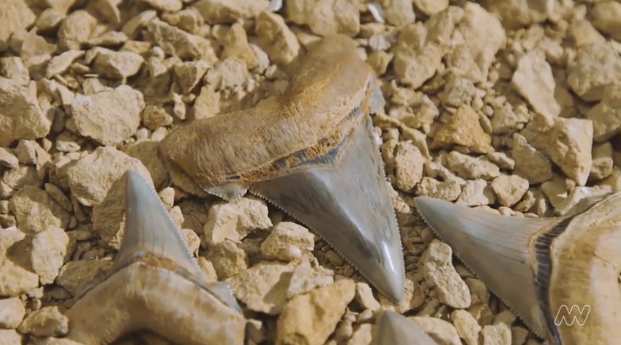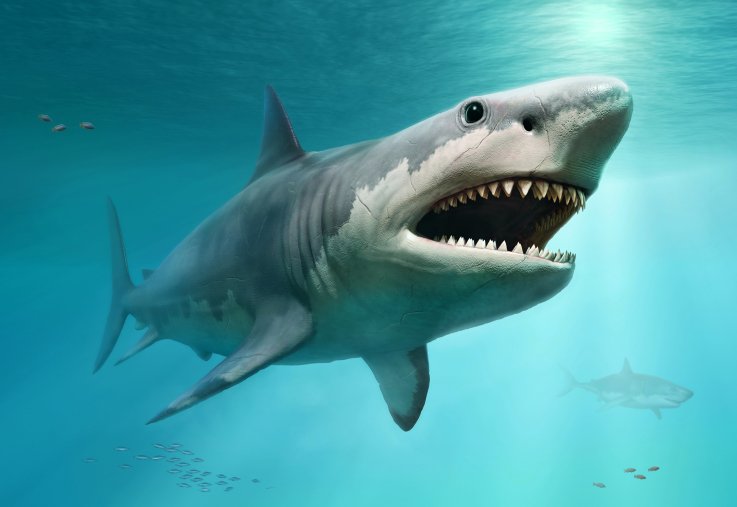‘Massive’ tooth of Megalodon, the biggest shark to ever live, discovered in Cayman Islands
BY ROSIE MCCALL From Newsweek

Giant tooth from a species of extinct shark was uncovered in the Cayman Islands during a development project. It is believed to have belonged to a megalodon (Otodus megalodon, previously Carcharodon or Carcharocles megalodon), famous for its starring role in The Meg (2018).
The Cayman Islands Department of Environment announced the prehistoric find on social media, after it was handed into the DOE for further study. According to the Cayman Campus, it is a little over 4 inches (10.25 centimeters) long.
The now-extinct megalodon is believed to have been the biggest shark to have roamed the oceans, with adults measuring a whopping 48 to 60 feet (15 to 18 meters).
“That’s three times longer than an adult great white shark and about six times longer than the biggest Caribbean reef shark,” the DOE told the Cayman Campus in a statement.
According to the Natural History Museum in London, some of the oldest fossils are around 20 million years old. The largest megalodon teeth ever found measure up to 7 inches (18 centimeters), making the one recently discovered in the Cayman Islands relatively tiny in comparison.
These teeth would have been used to pierce meat. Experts believe megalodons would have feasted on large fish and whales as large as humpbacks.
According to the DOE, the megalodon is thought to have gone extinct around the end of the Pliocene Epoch, approximately 3.5 to 2.6 million years ago. It was a time when a period of cooling and drying caused the expansion of savannas and other grasslands, which eventually led to the long-legged grazers that live there today.
While it is not known exactly what triggered their extinction, some scientists suggest their demise may have been the fault of a younger rival: chiefly, the great white shark.
According to a study published in PeerJ—the Journal of Life and Environmental Sciences, the megalodon suffered extinction 3.6 million years ago, not 2.6 million years ago as previously assumed. This later date does not coincide with any major events or shifts that could explain their disappearance. Instead, it may have taken place at a time of “faunal turnover,” when several species went extinct as other species started to emerge.
In this case it is assumed the great white shark, which first appeared on the fossil record around 6 million years ago, drove the megalodon to extinction. According to the scientists, there may have been a short overlap before the great white outcompeted the megalodon.
There have been a few megalodon teeth discoveries over the last year, including one in North Carolina and one in Mexico.


For more on this story and video go to; https://www.newsweek.com/massive-tooth-megalodon-biggest-shark-cayman-islands-1487195





